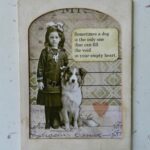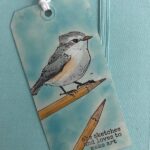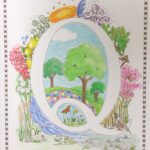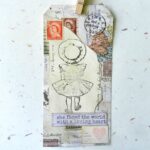My Personal Hero – Samuel J. Reader, Pioneer Artist and Diarist
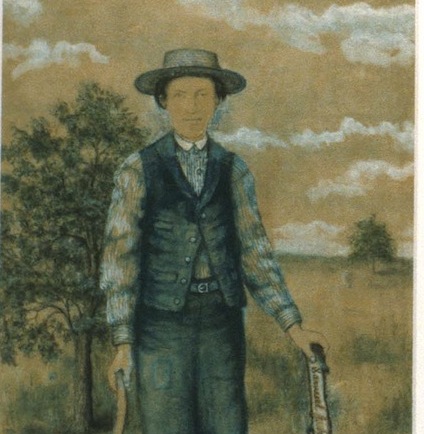
I learned about Samuel J. Reader early on in the research for my book. I believe our paths were meant to cross-his diary entries provided me with inspiration as an artist and writer. Once I saw Reader’s journals, I knew we were kindred spirits. Watercolor sketches have been part of my own journals for years and I had always hoped to illustrate my book on Kansas. A copy of his self-portrait is pinned to the bulletin board above my computer as a reminder to paint and write, even in the toughest of times.
Samuel Reader began keeping a diary at age thirteen. His inspiration came from the diaries of explorers Lewis and Clark who documented their travels, accompanied by maps and drawings. Reader’s journals, now at the Kansas State Historical Society in Topeka, contain wonderful watercolor sketches of his life in the Territory, beginning in 1855. Thirteen of the original fifteen diaries are in the collection of the Kansas Historical Society in Topeka. Volumes one and four were destroyed in 1890 when his farmhouse in Indianola burned. Reader continued documenting life until a year before he died in July 1914 at age 78.
Only 19 when he moved to Kansas Territory with his Aunt Liza and her husband, Samuel Reader staked his claim in Indianola, just north of Topeka. He had stopped attending school at sixteen or seventeen, as he preferred to learn on his own from books. He taught himself shorthand and French, both of which appear in his diaries. From his writings we also learn just how well read Reader was, with books such as The Last of the Mohicans (in French), Dickens, and Shakespeare, among those he mentioned.
As Willa Cather wrote in O, Pioneers, “The history of every country begins in the heart of a man or woman.” Samuel Reader’s diaries give detailed accounts of early Kansas events, as well the everyday life of a farmer. He wrote about border warfare, historic figures such as John Brown, and local history. He described the weather, local residents, and the growth of the Topeka area. On a more personal level, he wrote about his family, wife Lizzie, and the deaths of two of their daughters.
Reader’s diaries are a valuable record of life in Kansas Territory. They show the importance of the written personal journal and how ordinary words become extraordinary.






